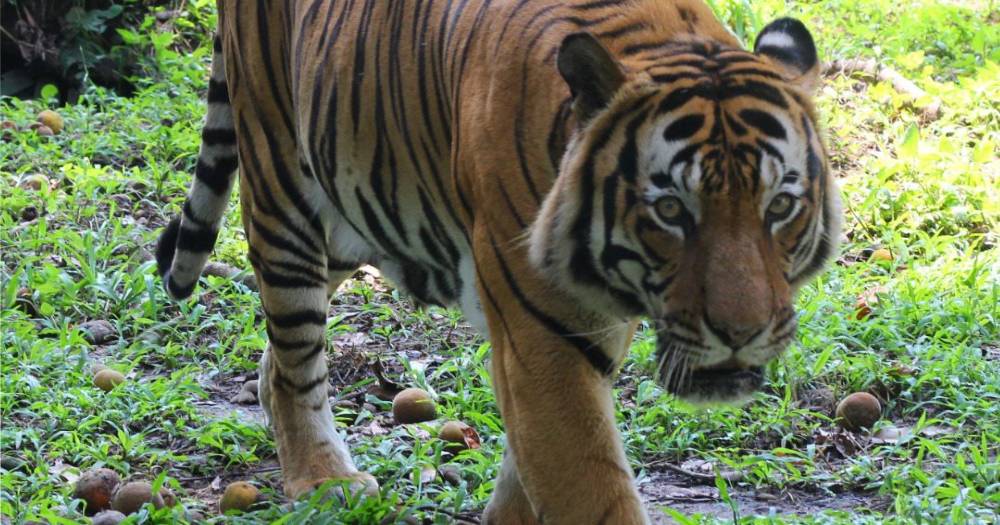Follow us on Telegram for the latest updates: https://t.me/mothershipsg
A tiger in Malaysia was shot dead by authorities on Jan. 7, after it killed a 59-year-old indigenous man in the northern state of Kelantan, Bernama reported.
The state's Department of Wildlife and National Parks pursued the tiger for three hours, and said they were forced to shoot the tiger after it charged at them.
The director of the wildlife department said tigers in Malaysia are "dying out", adding that the authorities were "sad" that they had to kill the tiger, AFP reported.
The Malayan tiger is classified as critically endangered by the International Union for Conservation of Nature (IUCN).
Regarded as the national animal of Malaysia, WWF estimated that there used to be as many as 3,000 tigers in the country in the 1950s, but their numbers have since dwindled to less than 200 in the wild.
Authorities "forced" to kill 120kg tiger
The victim appears to have been attacked after stepping out of his house to urinate.
According to the police, the victim's daughter who was nearby suddenly realised her father was nowhere to be seen, and found bloodstains on leaves in the area subsequently, Bernama reported.
She then went to get help from the villagers, and they saw a tiger "lingering nearby the victim's body" after a search in the area, the police said.
The 120kg tiger fled the scene after it was hit by one of the spears hurled by the villagers.
According to officials from the wildlife department, the villagers threw spears to fend off the tiger that charged at them, wounding its face in the process, AFP reported.
Subsequently, the tiger was shot by a team from the wildlife department.
In another incident on July 2021, a tiger was reportedly captured in the same district in Kelantan, after it attacked and seriously wounded a local.
What led to human-tiger conflicts?
Sophia Lim, the executive director and chief executive officer (CEO) of WWF Malaysia, said the organisation was "deeply saddened by the recent tragic incident".
In an opinion piece that was published in Malay Mail, she said incidents of human-tiger conflict was not uncommon in countries that have tiger populations such as Russia and Bhutan.
Such conflicts can occur when wild tigers interact with humans, their animals or livestock.
According to Lim, tigers suffer from poaching, retaliatory killings, and loss of habitat, and the solution for human-tiger conflict is to "minimise contact between wild tigers and humans".
However, this has become increasingly difficult in Malaysia as tigers lost their habitat due to deforestation and had to venture out to find food.
Tigers are territorial creatures and their territory changes with the availability of prey, Lim said.
The changing landscape may have changed their territories, bringing them in contact with humans.
Otherwise, being solitary animals, tigers are more likely to shy away from humans, Lim explained.
She urged the Malaysian authorities to implement the nine conservation strategies of the Malayan tiger which was approved by the Cabinet in June 2021.
Follow and listen to our podcast here
Top image via Jabatan PERHILITAN Semenanjung Malaysia/Facebook
If you like what you read, follow us on Facebook, Instagram, Twitter and Telegram to get the latest updates.
